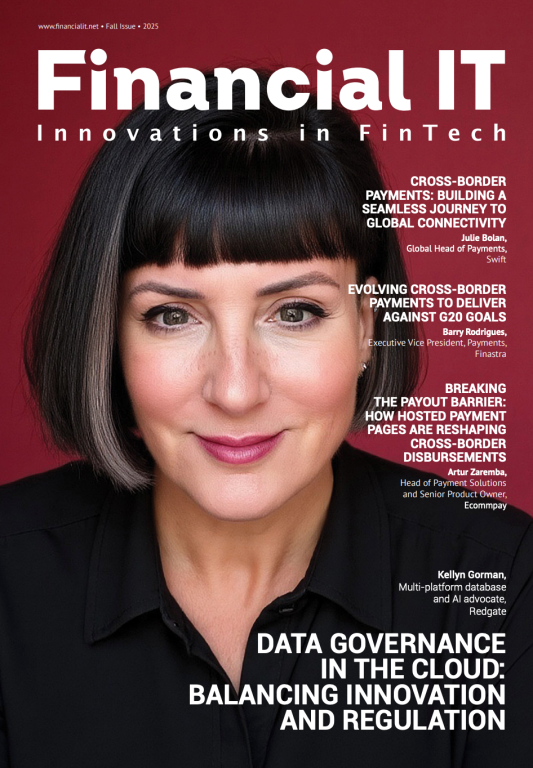Strategic Personal Lending: A Win-Win For Consumers And Financial Institutions

- Matt Tomko, Chief Revenue Officer at Happy Money
- 31.03.2025 12:30 pm #PersonalLending #FinancialInclusion
The current financial services landscape may look like a roller coaster at times, but it also presents compelling opportunities for banks, credit unions and asset managers to grow their portfolios while better addressing consumers’ financial goals. In particular, the rising cost of living and record-high credit card interest rates have created a widespread need for solutions that alleviate consumers’ financial stress. This trend is coupled with a resurgence in lending, with many financial institutions looking to put their capital to work in ways that will strengthen their portfolios and fuel smart, sustainable growth through economic cycles.
Lay of the Land: The State of the Consumer
Lenders must first understand the financial realities many consumers are facing in order to effectively serve them. Today, Americans are bogged down with over $18 trillion in total debt, with over $1 trillion of household debt held in credit cards. Many Americans continue to live paycheck-to-paycheck, turning to credit cards to help fill in the gaps. In fact, over 173 million consumers are carrying a balance, which can be an expensive and heavy burden given average credit card interest rates exceed 20%.
With household debt skyrocketing, it’s no surprise consumer sentiment has fallen to a two-year low. And with long-term inflation spiking at the fastest rate in over 20 years, consumers are feeling increasingly uncertain about their financial futures. In fact, recession fears and higher inflation have sent consumer confidence plunging to a four-year low. These disheartening statistics compound what we’ve already known to be true: Financial stress and the burden of high-interest debt is associated with adverse psychological health.
Against this backdrop, effective balance sheet management and responsible credit use are more vital than ever before, sending consumers in search of smart, sustainable ways to manage household finances and reduce financial stress. This includes finding ways to achieve financial goals like paying off high-interest debt and saving for important necessities regardless of macroeconomic conditions.
How Personal Loans Can Provide a Win-Win – If Approached the Right Way
Many Americans are making debt consolidation a top financial goal due to rising debt burdens and economic challenges. While there are several ways of approaching debt consolidation – from credit card balance transfers to debt management – one strategy that offers a win-win for consumers and financial institutions alike is personal lending. With current personal loan APRs sitting about 7.5% lower than credit cards on average, personal loans present an effective way for consumers to consolidate and pay down debt more quickly, simplifying and reducing their monthly payments and saving money on interest. In fact, if adopted broadly, leveraging personal loans could save U.S. households more than $80 billion annually.
Personal loans have a payoff for financial institutions too. Banks and credit unions that offer personal loans not only provide notable financial relief for borrowers, but they also introduce short-duration, high-yield assets to their balance sheets – helping strengthen and diversify their portfolios. These high-quality assets also present a powerful opportunity for hedge funds and asset managers to embrace the megatrend of private credit’s growing role in consumer finance. Importantly, these loans must be structured and presented in the right way in order to be meaningful and effective for financial institutions and the consumers they serve.
First, transparency should be a top priority, with the total cost of borrowing across the full term clear from the onset. Structured repayment options, well-defined terms and embedded education around responsible borrowing can help consumers make smarter decisions, while also strengthening their loyalty to the lender. After all, consumers with greater financial literacy tend to be more confident in their decisions and have higher satisfaction with their choices.
As many institutions struggle with thin margins and limited resources, working with a partner is often the best choice to efficiently implement their personal lending strategy. This allows the lender to leverage their partner’s scale without having to spend inordinate time and resources building the product from scratch. However, not all potential partners are created equal; the product design and lending standards are extremely important, making it critical for lenders to appropriately evaluate each.
Partners that can facilitate a seamless, digitally-optimized borrowing process that is backed by efficient and responsible underwriting, robust risk management and a track record of successful, mission-aligned lending practices should be prioritized. With the right partner, unsecured personal loans can create accountability and financial relief for consumers while creating a healthier, more diversified portfolio for the lender.
The product should be designed to help consumers manage debt, not extend it. If executed correctly, debt consolidation loans with fixed terms create accountability and relief for consumers since they can see the light at the end of the tunnel.
Making a Difference for Both Lenders and Borrowers
With ongoing inflation concerns and still-high interest rates, the current environment calls for a more nuanced approach to household balance sheet management. Personal loans present an opportunity to deliver both financial and psychological benefits for consumers, helping them take control of their financial futures. The lenders that approach these loans with the right strategies and partners aren’t just doing right by their customers and borrowers; they’re strengthening the sustainability of their businesses with stronger portfolios and greater yield.




















